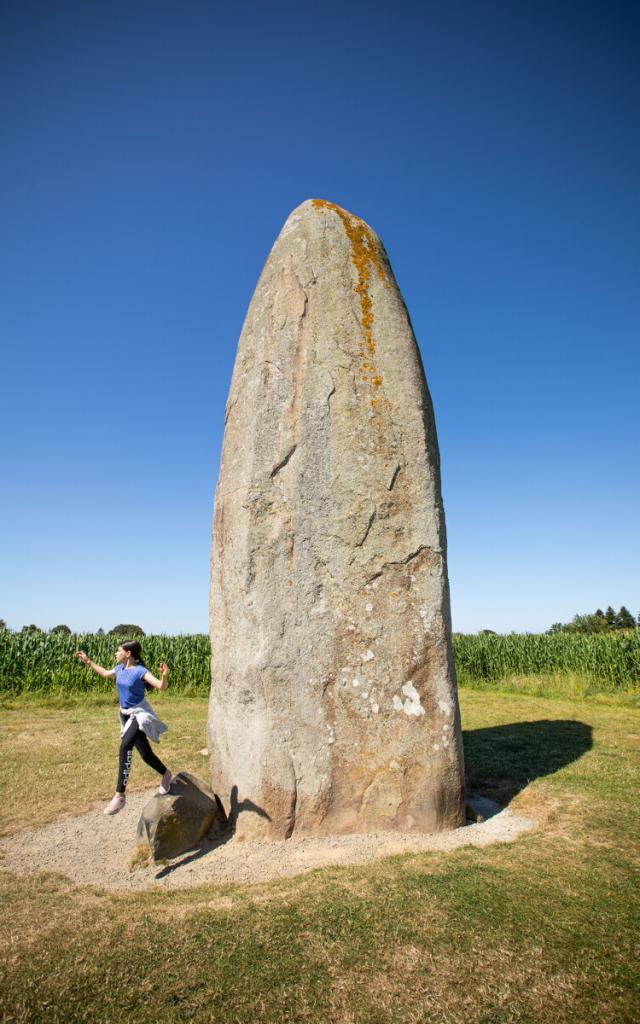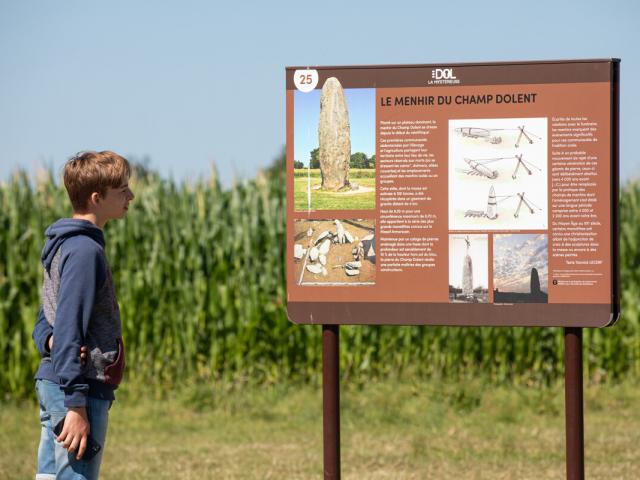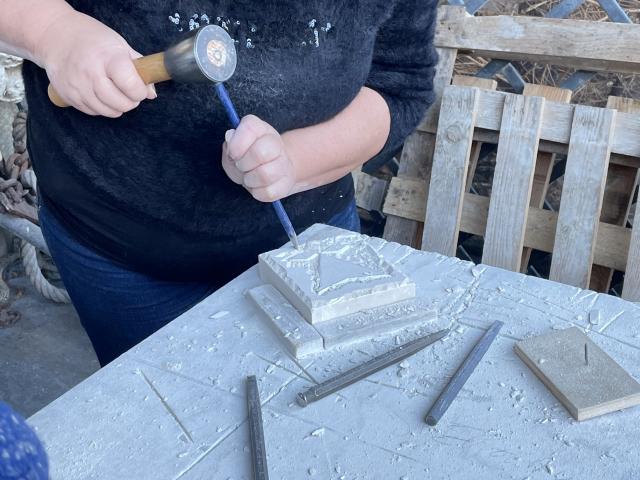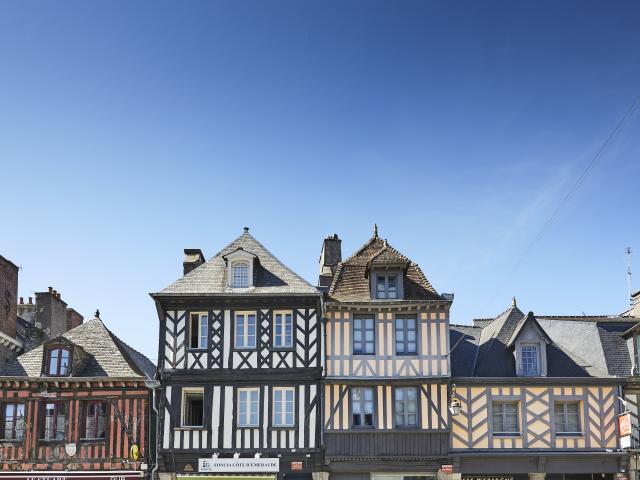Over the centuries, the Champ-Dolent menhir has witnessed the evolution of the world. The menhir was converted to Christianity and a cross was placed at its summit. Removed during the Revolution, the cross was replaced in 1816. It disappeared at the beginning of the 20th century, shattered by a heavy storm, it seems!
At one time a money box was installed there, which explains the two holes on this menhir.
Pagan or superstitious cults around the megaliths have followed, and it is said that this menhir is a source of energy and at one time young girls wanting to have children would rub themselves against it to increase fertility.
This menhir seems eternal, but legend has it that it imperceptibly sinks into the ground each time someone dies. Some even say that this menhir serves as a link with extraterrestrials! The Breton “X-files” no doubt … Case to follow!!
But back to the nitty-gritty with a literary break: And yes Stendhal, was a tourist, just like us!
We’ve learned that the master of “Le Rouge et le Noir”, the man who gave birth to Julien Sorel, the writer Stendhal talks about the Menhir du Champ-Dolent in his work “Mémoire d’un touriste”.
He discusses this must-see in these terms:“It’s a quarter of a league from the town that you have to go and look for the famous Champ-Dolent stone. Does the name conjure up images of human sacrifice? My guide tells me in all seriousness that it was placed there by Caesar. Was it once in the middle of the forest? Now it stands in the middle of a cultivated field. This menhir is twenty-eight feet high and ends in a point; at its base it is, by my measurement, eight feet in diameter. All in all, it’s a block of greyish granite in the shape of a slightly flattened cone. It should be noted that this granite is only found more than three quarters of a league from the town, at Mont-Dol, a hill surrounded by marshland and which was probably once an island. The Champ-Dolent stone rests on a quartz rock into which it sinks a few feet. By what mechanism did the Gauls, whom we imagine to be so little advanced in the arts, transport a mass of granite forty feet long and eight feet thick? How did they erect it?
 SMBMSM - Menhir of Champ Dolent - Dol-de-Bretagne
SMBMSM - Menhir of Champ Dolent - Dol-de-Bretagne Menhir_du_Champ-Dolent_-_Dol-de-Bretagne-Simon_Bourcier-920
Menhir_du_Champ-Dolent_-_Dol-de-Bretagne-Simon_Bourcier-920 Photographer
Photographer



















